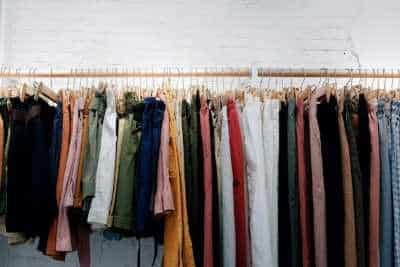How to Start a Used Clothes Business? Are you an aspiring e-commerce entrepreneur, looking for ways to test the waters before diving in headfirst? Or perhaps you’ve been eyeing up the idea of starting your own business but are not sure where to begin?
Perhaps you’re just fascinated by the concept of selling secondhand clothes and know that with a little research and some practice, you could launch a successful venture.
Pondering about opening a used clothing store? We let you know what you really want to be aware of to get everything rolling.
How to Start a Used Clothes Business? Starting a Second-Hand Clothing Business:
Whatever your reasons, there’s no doubt that operating a used clothes business can be a rewarding experience.
Negotiating prices, tracking inventory, marketing to target customers, customer service and more will all play an important part in running your business effectively and making good money from it.
If you’re ready to get started now, read on for everything you need to know about launching a successful used clothes business.
What is a used clothes business?
A used clothes business is any type of retail business that sells secondhand items. Used clothes businesses can take many forms, from specialized stores that sell only clothing, to general flea markets that sell a wide range of secondhand items.
Here is some useful data that is ideal for those of you who anticipate opening a used clothing store. Peruse this before you start your endeavour.
Why start a used clothes business?
The benefits of starting a used clothes business are many. You’ll be able to make money while spending very little to acquire the inventory you sell.
Plus, you won’t need to spend a lot of money on advertising as many people buy used clothes without ever planning to buy new clothing. This gives you the opportunity to sell to these people with almost no marketing required.
You’ll also find that it’s much easier to sell used clothes than new ones. For these reasons, it’s not surprising that this is such a popular entrepreneurial venture for many people.

Things to Consider When Starting a Used Clothing Store:
Before you can start a successful used clothes business, you’ll need to consider where your clothes are coming from and how you’ll go about sourcing them.
Business is blasting for secondhand shops and transfer shops in the present extreme monetary environment.
The vast majority of used clothes sold online are sourced from thrift stores, Goodwill, Salvation Army and other used clothing outlets.
These types of businesses sell donated clothes and other items for very low prices, meaning you can buy them for very little and sell them for a higher price online.
Secondhand clothing can be a lucrative business and the best part is, you don’t need a large investment of capital to get started.
As long as you have a little cash in the bank, some free time, and a basic knowledge of how to buy and sell items online, you’re ready to start a used clothes business.
The best way to start a used clothes business is by setting up an online store and sourcing as many items as possible from thrift stores.
How to find suppliers and manufacturers for your inventory:
Finding suppliers and manufacturers for your used clothes store inventory can be a challenging experience.
Luckily, you have eBay as a resource. On eBay, search for suppliers, manufacturers, and inventories that fit your needs.
When you find a suitable supplier, contact them, and negotiate a price for the items you want to purchase.
Once you’ve made your purchase, contact the supplier to tell them that you want to be able to resell the items. They’ll usually let you keep your items until the end of the sale.

How to negotiate with suppliers and manufacturers:
Negotiating with suppliers and manufacturers is crucial in running a successful used clothes business. Besides, if you’re not willing to do this, you’ll end up paying a lot more than you need to.
There are a few important things to keep in mind when negotiating with your suppliers and manufacturers.
- Be realistic in your pricing and don’t overprice your items.
- Always be on time for delivery and don’t be a late entrant to the negotiation.
- Don’t be afraid to walk away from a deal that’s not good for you. Try to find common ground between the two of you.
Things you’ll need to run a Secondhand Clothing Store:
Used clothes business A place to store your inventory:
If you plan to store your inventory in your home, you’ll need a large storage space. This can be a garage, cellar, spare room, or even a shed.
If you don’t have any spare space available, or you want to keep your business completely separate from your home, you could look into renting a storage unit.
A computer, a phone, and internet access:
This is where you’ll do all of your online business. You’ll use your computer to source items from thrift stores, take product photos, list your items on eCommerce websites, and communicate with customers.
You’ll also need a smartphone or landline phone for communicating with suppliers, taking photos, and accepting.
Read Also The Importance of Creativity in Starting a New Business
Things to think about before you launch your venture:
Where will you set up your used clothes store? This will mostly depend on the type of business you want to run.
Where will your business be located?
You could open a store in your home or in a local mall. If you have the resources to rent a large location, by all means, go ahead.
On the other hand, if you’re setting up in a residential area or in a small mall, keep in mind that you’ll have to spend a lot more money on rent than if you were to open up a business in a commercial area.
You’ll also have to think about the type of neighbours you’ll have and whether you’re ready to deal with them.
Important terms and concepts you need to know:
Inventory turnover:
The inventory turnover rate is the ratio of inventory worth to sales.
Inventory life cycle:
Your inventory life cycle is the time between the purchase of your inventory and the time you sell it.
Average time to sell:
Time to sell is the average time between when an item is purchased and when an item is sold.
Margin:
Margin is the difference between the cost of an item and the price it is sold for. If a customer pays $40 for an item, you keep $35 as profit and pay $7 for the cost of goods sold, the margin is $7.
Cost of goods sold (COGS):
COGS is the amount a manufacturer or supplier assesses as the cost of producing an item.
It includes the cost of materials, labour (if any), and overhead expenses such as rent or electricity.
Gross profit:
Gross profit is the difference between sales and COGS. The amount of money a business makes in relation to the amount of inventory it holds.
Net profit:
Net profit is the difference between gross profit and operating expenses. The amount of profit a business makes in relation to its inventory.
Profit margin:
Profit margin is the difference between net profit and expenses.
ROI Return:
ROI Return on investment is the percentage of your investment that comes back to you in profit.
CAGR:
CAGR is the annual growth rate of a business.
Inventory management:
Inventory management is the process by which a business manages its inventory.
Turnover rate:
The turnover rate is the number of times your inventory stock is sold, or used, and replaced.
See Also Buffalo safety Damar Hamlin Video
Tips for running a successful used clothes business:

Keep an accurate inventory:
It’s important that you keep an accurate inventory of your stock at all times. Be prepared to receive shipments of new items and mark them as sold as soon as possible.
Adhere to strict guidelines for conditions:
If you want to sell high-quality items, you’ll need to be strict about the type of items you accept. Make sure each item you accept is in good condition and doesn’t smell strong.
Be mindful of the market:
It’s easy to get caught up in the excitement of buying and selling secondhand items, but you must be mindful of the market.
Look at current trends and sales figures, and if you notice an item is not selling as well as it once did, stop buying it.
Watch Also Idaho Suspect Bryan Christopher Kohberger Update
Conclusion
Running a used clothes business is more than just buying cheap clothes and selling them for a higher price. It involves a lot of research and marketing, and it takes time to build a loyal customer base.
That being said, it can be a very rewarding experience and one that can be done with minimal investment of time and money.
If the idea of buying and selling used clothing online has caught your attention, make sure you’re prepared for what lies ahead and understand the ins and outs of operating a successful used clothes business.






















